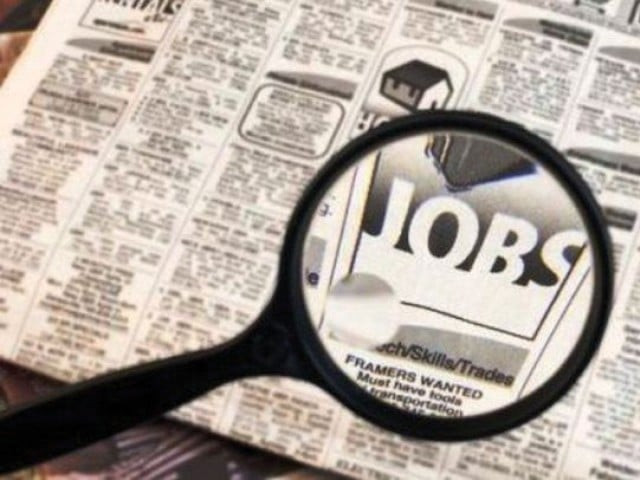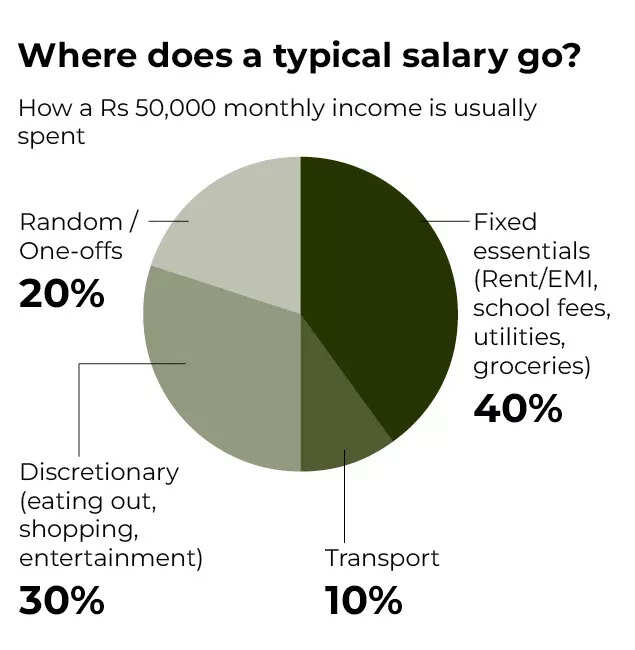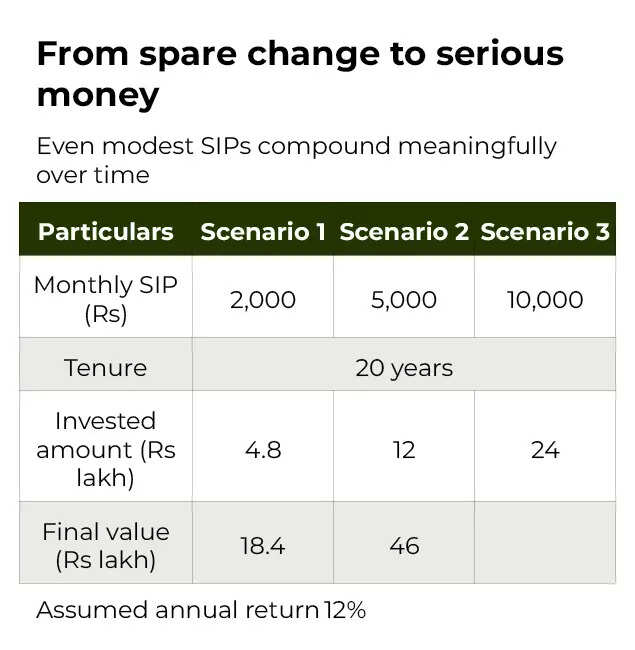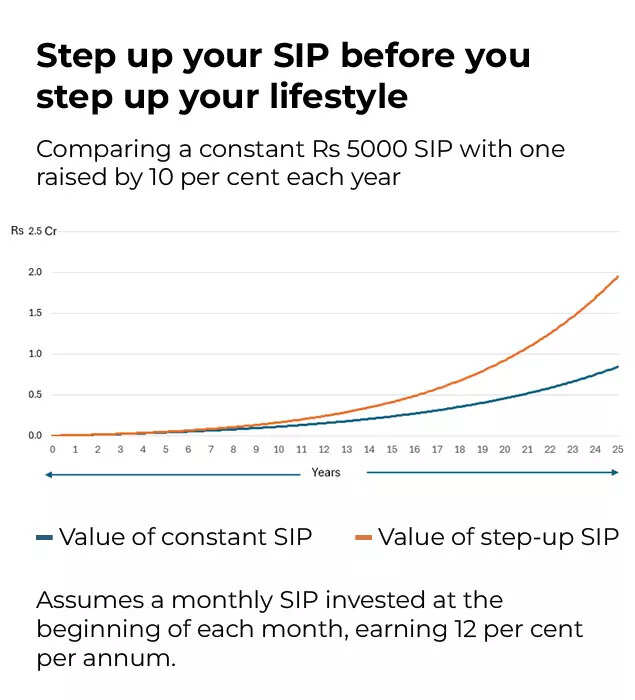Business
‘No boom-bust’: a dangerous economic cycle | The Express Tribune

External pressures are rising without growth dividend that once cushioned past busts
KARACHI:
Pakistan’s economy has long followed a familiar rhythm of boom and bust. Each cycle begins with an International Monetary Fund (IMF) stabilisation phase that focuses on fiscal tightening, inflation control, and temporary improvement in external balances. When stability returns, political leadership typically shifts toward growth, relying on domestic demand, cheap credit, and rising imports.
This expansion inevitably inflates the current account deficit (CAD), depletes reserves, and ends in another downturn. For decades, the pattern has repeated with almost mechanical predictability.
Today, however, Pakistan faces an even more unsettling variant of this cycle — one defined by rising external pressures without any real boom. The country is once again recording current account deterioration, but growth remains weak and uneven. The Pakistan Bureau of Statistics (PBS) recently estimated GDP growth for FY2025 at around 3.0%, yet this modest figure conceals stagnation in productive sectors and minimal job creation.
In essence, the deficit is widening not because of dynamic expansion, but because even minor import recovery is unmatched by export earnings. This imbalance — where economic pain persists without a growth dividend — marks a new, more fragile phase of stagnation.
Monetary easing has failed to spark revival. Although interest rates have been trimmed from record highs, private sector borrowing remains subdued. Commercial banks prefer risk-free lending to the government, leaving businesses starved of credit. Households, exhausted by years of inflation, lack purchasing power. Energy costs remain unpredictable, while political uncertainty discourages long-term investment. The result is an economy caught in paralysis: liquidity exists, but confidence and capacity are absent.
Underlying this stagnation is a chronic erosion of export competitiveness. In the 1990s, exports made up around 16% of GDP; by 2024, the figure had fallen to just 10%. Pakistan no longer earns enough foreign exchange to finance essential imports, leaving it vulnerable to external shocks and supply disruptions. Weak exports also translate into fewer industrial jobs and limited value addition, compounding social distress.
The World Bank’s latest “Pakistan Development Update” (April 2025) concludes that Pakistan’s growth model is unsustainable, noting that it “inflates import bills without expanding productive capacity” and fails to deliver inclusive benefits. The Bank cautions that while macroeconomic stabilisation has been achieved, “turning it into sustained and inclusive growth” requires deep structural reforms. This diagnosis aligns with the broader reality: Pakistan’s economy remains heavily consumption-driven and dependent on remittances, not on exports or productivity gains.
Excessive import dependence further worsens vulnerability. The economy relies on external supplies for food, fuel, and industrial inputs. The global energy price surge of 2022 — following the Ukraine conflict — exposed this weakness brutally, triggering inflation, a currency crisis, and fiscal strain. With minimal domestic buffers, even moderate global shocks can destabilise the entire economic framework.
Meanwhile, the state’s persistent fiscal weakness magnifies external fragility. Pakistan’s narrow tax base and poor compliance prevent adequate revenue generation, forcing the government to borrow domestically and abroad. These loans increasingly serve to service old debts rather than fund productive investments. As public debt mounts, fiscal space for development shrinks, and the economy drifts further into dependency on IMF lifelines. Each bailout defers crisis but deepens structural fragility, entrenching a cycle of temporary relief followed by renewed distress.
Investment – both domestic and foreign – remains chronically low. Pakistan’s investment-to-GDP ratio continues to trail behind regional peers, reflecting limited industrial capacity, policy inconsistency, and weak infrastructure. Even when credit is available, firms hesitate to expand amid political volatility and unpredictable regulation. Without capital formation, productivity stagnates, and exports remain uncompetitive.
The recent exodus of multinational companies (MNCs) illustrates this erosion of investor confidence. Several established global firms have either downsized or exited Pakistan altogether, citing supply-chain disruptions, currency volatility, and an unpredictable business environment. These departures — from consumer goods to energy sectors — are symptomatic of a deeper malaise. When experienced foreign investors see no future growth prospects, it signals that the local business climate has turned untenable. Beyond lost capital, such exits diminish technology transfer, managerial expertise, and export linkages, weakening the very foundations of economic resilience.
Political instability and inconsistent governance remain overarching impediments. Frequent power shifts, policy reversals, and weak institutional continuity have eroded credibility at home and abroad. Investors perceive high risk with little reward, while policymaking often prioritises short-term populism over structural reform. This environment deters innovation, discourages entrepreneurship, and ensures that even well-intentioned policies falter in implementation. Thus, Pakistan stands at a perilous juncture: the costs of external imbalance are resurfacing without the compensating benefits of growth. Unlike previous cycles that at least offered temporary prosperity before collapse, the current phase delivers austerity without expansion — a “no-boom bust.” The economy is tightening under debt and inflationary pressures before achieving any meaningful improvement in employment, income, or productivity.
THE WRITER IS A FINANCIAL MARKET ENTHUSIAST AND IS ASSOCIATED WITH PAKISTAN’S STOCKS, COMMODITIES AND EMERGING TECHNOLOGY
Business
Government borrowing higher than expected after winter fuel payments U-turn

Borrowing fell last month to its lowest November level for four years but was still higher than expected as figures for the year so far were pushed higher due to the Government’s U-turn on winter fuel payments.
Official figures showed borrowing stood at £11.7 billion last month, £1.9 billion less than in November last year and the lowest for that month since 2021 thanks to a sharp fall in debt interest payments.
But the figure was more than the £10.3 billion expected by most economists and the £8.6 billion forecast in March by the UK’s independent fiscal watchdog, the Office for Budget Responsibility (OBR).
The OBR’s monthly forecasts from the budget on November 26 are not available until mid-January, according to the ONS.
Borrowing for the eight months of the financial year so far was £132.3 billion, £10 billion higher than the same period a year ago and £16.8 billion higher than the OBR forecast in March.
This was partly due to an extra £1.8 billion of spending on winter fuel payments after the Government U-turned on its previous decision to severely restrict payments through means testing, instead opting to give the payout to all pensioners except those earning above £35,000 a year.
This helped drive an upward revision to borrowing for the seven months to October by £3.9 billion.
ONS senior statistician Tom Davies said: “Despite an increase in spending, this month’s borrowing was the lowest November for four years.
“The main reason for the drop from last year was increased receipts from taxes and National Insurance contributions.”
November’s figure was pushed lower thanks to falling debt interest payments on borrowing, down by £200 million year-on-year to £3.4 billion and the lowest November level for six years.
Public sector net debt, including the Bank of England, reached £2.93 trillion at the end of November, which is around 95.6% of gross domestic product (GDP) and 0.3 percentage points more than a year ago, although remains at levels last seen in the early 1960s.
Elliott Jordan-Doak, senior UK economist at Pantheon Macroeconomics, said there was “very little Christmas cheer for the Chancellor” in the latest borrowing figures.
He added: “Ms Reeves has staked much fiscal credibility on chunky tax increases in the back end of the forecast period. But we think today’s figures further illustrate the shaky foundations of that gamble.
“Revenues continue to underperform, and the smorgasbord approach of tax increases relies on distortionary tax increases with uncertain yields.
“We also have serious doubts about the Government’s ability to follow through on the raft of spending cuts announced in the Budget.”
Chief Secretary to the Treasury James Murray said the debt interest payments underscored the need to bring borrowing down.
He said: “£1 in every £10 we spend goes on debt interest – money that could otherwise be invested in public services.
“That is why last month the Chancellor set out a Budget that delivers on our pledge to cut debt and borrowing.”
Martin Beck at WPI Strategy said “confidence remains the missing ingredient”.
“A clear and credible pro-growth strategy from the Government – and an end to the pervasive gloom surrounding the UK economy – may matter just as much for the public finances as the fine print of future tax and spending plans,” he said.
Business
Ask Dhirendra: “How do I decide how much to save and invest when my income is just about enough?” – The Times of India

“How do I decide how much to save and invest when my income is just about enough?”This is one of those questions that sounds technical, but is actually very emotional.On paper, it’s simple: income comes in, expenses go out, and whatever is left is “savings. In real life, income comes in, rent, EMIs, school fees, petrol, Swiggy, Zomato, sale on Myntra, birthday gifts, one sudden expense… and at the end of the month, you look at your balance and say, “I’ll start investing from next month. Pakka.”Next month looks surprisingly similar.So let’s start with an honest admission: for most people, the problem is not which fund to choose. It’s how much they can realistically save when it feels like the money is just about enough.At Value Research, whenever we look at this, we don’t begin with a number like “you must save 30%”. We start with a different idea: savings are not what is left after spending. Savings are what you decide first; spending adjusts after that if you flip this order, the maths – and your behaviour – changes completely.A good rule of thumb for many middle-class households is to allocate 20–30% of their take-home income to savings and investments. However, I also know that for many people today, 30% sounds like a bad joke. So instead of fighting over the “ideal” number, let’s work with two simpler questions:
- What can you save today without breaking your life?
- How can you make that number grow every year?
To answer the first question, you need to know where your money is actually going, not where you think it is going. For one or two months, track your expenses honestly – not for Instagram, for yourself. You don’t need an app; even a simple notebook or spreadsheet works.

Where does a typical salary go?
Once you see your own pie chart, three things usually stand out:
- Some expenses are non-negotiable (rent, basic food, fees).
- Some are negotiable but important (a modest phone, occasional eating out).
- Some are pure leakage (unused subscriptions, impulsive orders, “I don’t even remember what this was”).
Your first “investment” might simply be plugging two or three leaks. Even if that frees up only ₹2,000–₹3,000 a month, that is your starting SIP.Now let’s look at how “small” that really is.

From spare change to serious money
When we run these numbers at Value Research in our retirement and goal calculators, the results are always the same: the gap between zero and small is far bigger than the gap between small and perfect.But what if your income truly is at the survival stage? There are people for whom even ₹2,000 is a luxury some months. If that’s your reality, you have two parallel jobs. One is to create a tiny habit – even ₹500 or ₹1,000 a month into a recurring deposit or a conservative fund. The absolute amount is less important than the mental switch from “I’ll save if anything is left” to “I will save something, and then I will live on the rest.”The second job is to make sure that as your income grows, your lifestyle doesn’t expand at the same speed. This is where a lot of middle-class Indians quietly sabotage themselves. Every salary increase automatically becomes a better phone, nicer meals out, upgraded gadgets, and bigger car loans. The percentage saved stays the same, or sometimes even falls.A very powerful habit – one we often build into plans at Value Research – is the “step-up”. Each year, when your salary goes up, you increase your SIPs and savings before you upgrade anything else.

Step up your SIP before you step up your lifestyle
In many examples we’ve run, the step-up strategy leads to a dramatically higher corpus at the end, without you ever feeling an acute “sacrifice” in any single year. You just avoid letting every pay hike leak out into lifestyle.Now, how do you decide your own number?Here’s a simple approach:
- First, add up your genuine essentials: rent/EMI, groceries, utilities, fees, basic transport.
- Next, be realistic and add a modest amount for discretionary spending that you know you’ll do anyway – because you are human, not a robot.
- See what is left. From that leftover, commit to a percentage – even 10% of your take-home income – as a non-negotiable
saving and investing amount. Set up automatic transfers and SIPs for that right after your salary date.
If that number feels tight, start a little lower and promise yourself one thing: every time your income goes up, your savings rate will go up faster than your spending.At Value Research, when we build long-term plans, we don’t assume people will suddenly start saving 40% from next month. We assume they will start somewhere realistic, and then we design step-ups. The rigour is in the process, not in some magical starting number.One last point. Many people postpone investing because they are embarrassed by how small their starting amount looks. Please don’t underestimate the psychological power of seeing a small, growing pile that you started and maintained. It changes how you think about yourself: from “I can’t save” to “I am someone who always saves something.” That identity is worth more than one extra dinner out.So how much should you save and invest when your income feels just about enough? The honest answer is: start with whatever you can without lying to yourself, protect that amount like you protect your rent, and then make sure it rises every time your income increases. The “right” number is not what a formula says; it’s the number you will actually stick to for the next 20 years.The perfect percentage can wait. The first rupee cannot.If you have any queries for Dhirendra Kumar you can drop us an email at: toi.business@timesinternet.in(Dhirendra Kumar is Founder and CEO of Value Research)
Business
Amazon Layoffs: Job Cuts in Luxembourg May Force Indian, Other Non-EU Staff To Leave

Last Updated:
Amazon is cutting about 8.5% of its workforce in the tiny European nation, or roughly 370 employees out of a total headcount of 4,370.

While Amazon described the move as part of routine restructuring, the consequences could be severe for non-EU workers. (Photo Credit: X)
When Amazon announced plans earlier this week to cut 14,000 jobs globally, a significant share of the impact fell on its technology operations in Luxembourg, a move that could put Indian and other foreign employees in a particularly difficult position.
According to a Bloomberg report, the e-commerce giant is cutting about 8.5% of its workforce in the tiny European nation, or roughly 370 employees out of a total headcount of 4,370. This marks Amazon’s largest round of layoffs in Luxembourg in nearly two decades.
While the company described the move as part of routine restructuring, the consequences could be severe for non-EU workers. Luxembourg hosts Amazon employees from countries including India, the US, Australia, Egypt and Tunisia. Under local immigration rules, foreign workers who lose their jobs typically have three months to find new employment or leave the country.
“These are adjustments that reflect business needs and local strategies,” Amazon said in a memo to staff dated December 12, adding that the severance package “goes well beyond industry benchmarks”. The Luxembourg labour ministry did not respond to Bloomberg‘s request for comment.
Prash Chandrasekhar, a member of Amazon’s employee delegation in Luxembourg, told Bloomberg that some employees are almost certain to be forced to leave the country. “I am almost sure some employees will have to leave. It’s not easy to find a job in Luxembourg, for 370 people entering the job market at the same time,” he said. Chandrasekhar added that for professionals seeking roles in big technology firms, there are limited alternatives outside Amazon in the country.
Under European Union rules, companies must consult employee representatives, and in some cases the government, before carrying out mass layoffs. Following two weeks of negotiations, Amazon reportedly reduced the number of planned job cuts in Luxembourg from 470 to 370. A portion of affected employees are expected to receive formal termination notices in February, Chandrasekhar told the agency.
Beyond the immediate human impact, the layoffs may also create friction in Amazon’s long-standing relationship with Luxembourg, which has positioned itself as a tax-friendly hub for multinational companies. With a population of about 6,80,000, the country has benefited from hosting Amazon’s European operations since 2003, and the company remains its fifth-largest employer even after the cuts.
An Amazon employee, speaking anonymously to Bloomberg, said most of the job losses are expected among software developers as the company expands its use of artificial intelligence and trims roles created during the pandemic-era hiring boom.
Trade unions, including the General Luxembourg Workers’ Organization (OGBL), have accused the government of granting Amazon and other multinationals “outsized” tax benefits. Bloomberg reported that Amazon and several foreign firms operate holding structures in Luxembourg to channel European business, using accounting practices that were ruled legal by European courts in 2023 but allow companies to minimise tax liabilities.
Public records show that Amazon EU Sarl, the Luxembourg-based holding entity, reported €70.4 billion ($82.8 billion) in EU e-commerce sales last year, nearly matched by expenses including staff costs. As a result, taxable profits amounted to just €180 million.
Despite the layoffs, political ties remain publicly cordial. In November, Luxembourg Prime Minister Luc Frieden met Amazon chief executive Andy Jassy in Seattle, calling the company a “vital partner” in a LinkedIn post. Jassy responded, “Luxembourg’s been an important home for Amazon and our 4,000 teammates there. Appreciated the discussion and partnership.”
December 19, 2025, 12:27 IST
Read More
-

 Business6 days ago
Business6 days agoHitting The ‘High Notes’ In Ties: Nepal Set To Lift Ban On Indian Bills Above ₹100
-

 Politics1 week ago
Politics1 week agoTrump launches gold card programme for expedited visas with a $1m price tag
-

 Business1 week ago
Business1 week agoRivian turns to AI, autonomy to woo investors as EV sales stall
-

 Fashion1 week ago
Fashion1 week agoTommy Hilfiger appoints Sergio Pérez as global menswear ambassador
-

 Sports1 week ago
Sports1 week agoPolice detain Michigan head football coach Sherrone Moore after firing, salacious details emerge: report
-

 Business1 week ago
Business1 week agoCoca-Cola taps COO Henrique Braun to replace James Quincey as CEO in 2026
-

 Tech1 week ago
Tech1 week agoGoogle DeepMind partners with UK government to deliver AI | Computer Weekly
-

 Sports1 week ago
Sports1 week agoU.S. House passes bill to combat stadium drones











